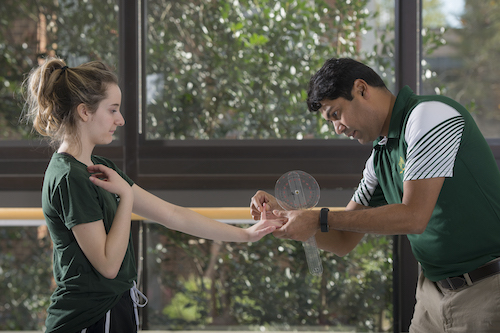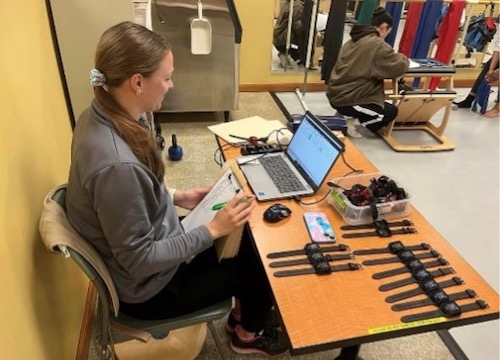Researchers at George Mason University’s College of Education and Human Development (CEHD) and College of Visual and Performing Arts are studying the intricate world of collegiate dance as they try to develop a better understanding of the physical and mental demands placed on dance majors.

The research team is led by Jatin Ambegaonkar, a professor in the Athletic Training Education Program within Mason’s School of Kinesiology, Mason doctoral candidate Kelley Wiese, and Jena Hansen-Honeycutt, the athletic trainer for the School of Dance.
This study, funded by a grant from the Virginia Athletic Trainers’ Association, will allow the researchers to call attention to the rigorous nature of this art form and how it can impact the well-being of performers. In so doing, they hope to increase awareness of the health needs of collegiate dancers.
The study will include an assessment of the physical activity demands and sleep quality among 30 to 40 Mason dance majors, as measured by data collected from wearable biosensors, and an analysis of self-reported perceptions involving physical and mental workload, fatigue, and sleep within the same demographic. The researchers believe that an assessment of the sleep habits and workload endured by these performers will elucidate the complexities of the physical and mental strains experienced by collegiate dancers and provide crucial information to clinicians, educators, dance programs, and the dancers themselves.

While dance offers physical and psychosocial benefits to an estimated 11 million participants in the United States, an alarming 85% of dancers suffer injuries annually, underscoring the vital need for specialized care.
Weise, who is pursuing a PhD in Education with a kinesiology concentration, is dancer and performer herself, which led to her interest in performing arts medicine. “My personal passion for performing arts aligned with the desire to provide quality care for performers,” she said. She added that this understanding, cultivated through her personal experiences on stage, provides her with insights into the physical and psychological demands of artists during training, rehearsals, and recovery.
Ambegaonkar anticipates the study also will illustrate the importance of on-site access to qualified health care professionals who are dedicated to monitoring and supporting the unique needs of this specialized group of aesthetic athletes.
For Ambegaonkar, his lead role in the current study is representative of the dedication and commitment he has exhibited throughout his career in seeking to expand the body of scientific knowledge pertaining to dancers’ risk of injury—a mission he embarked on when he first started working at Mason in 2006. His ethos of “Health for Dancers, Dance for Health,” gave rise to a pioneering consortium established in 2018, Supporting Healthy Arts Research (SHARe), aimed at holistically addressing dancers’ health needs.
To this end, he believes that this area of research holds the promise to unlock crucial insights that could significantly impact the training, recovery, and overall care provided to collegiate dancers and which could lead to enhanced support and understanding within the performing arts.
